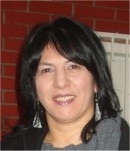
Plenary Lecture
The Analysis of Wireless Relay Systems in the Presence of Short Term Fading by Using Different Mathematical Methods

Professor Dragana Krstic
Faculty of Electronic Engineering
University of Nis
Serbia
E-mai: dragana.krstic@elfak.ni.ac.rs
Abstract: Fading is the main obstruction of signals which are transmitted over propagation media in wireless relay communication systems. Fading is changing with time, geographical position or frequency, and it is modeled as a random process. Different statistical models explain characteristics of short term fading and a few distributions can describe the envelope of the received signal: Rayleigh, Rice, Nakagami-m, κ-μ, α-µ, η-µ… In this lecture, the communication wireless relay systems in the presence of short term fading are considered. Such systems have two or more sections. The desired signal in sections is subjected to short term fading. The outage probability, as one of the most important system performance, is calculated. There is two different cases. For the first case, the outage probability is observed as probability that the signal envelope in any sections falls below the specified threshold. The outage probability for this case can be calculated as cumulative distribution function (CDF) of minimum of signal envelopes from all sections. For the second case, the outage probability is defined as probability that output signal envelope becomes smaller than determined threshold. The outage probability for this case is equal to the CDF of product of signal envelopes at sections. The outage probability is calculated in the closed form. The useful closed form expression for average level crossing rate (LCR) are calculated also. The expressions for outage probability and LCR can be used for calculating the average fade duration (AFD) of observed relay system. The performance are presented graphically and influence of fading parameters is discussed. The resulting integrals for system performance are solved using different mathematical functions and methods. Some of them are performed by using the Laplace approximating formula. Some integrals are obtained in the closed form by dint of modified Bessel function of the second kind, gamma function, generalized hypergeometric function, confluent hypergeometric function of the first kind, confluent hypergeometric function of the second kind or Tricomi confluent hypergeometric function, etc.
Brief Biography of the Speaker: Dragana S. Krstic was born in Pirot, Serbia. She received the BSc, MSc and PhD degrees in electrical engineering from Department of Telecommunications, Faculty of Electronic Engineering, University of Nis, Serbia, in 1990, 1998 and 2006, respectively. Her field of interest includes telecommunications theory, optical, wireless, mobile and satellite communication systems. She works at the Faculty of Electronic Engineering in Nis since 1990. She participated in more projects which are supported by Serbian Ministry of Science and some international projects. She has written or co-authored about 230 papers, published in journals and at the international/ national conferences. She has reviewed many articles in IEEE Transactions on Communications; IEEE Communications Letters; ETRI journal; C&EE Journal; Elektronika ir Elektrotechnika and other well known journals. She is/ was reviewer of the papers for hundreds conferences and the member of technical program committees and international scientific committees of a large number of scientific conferences. Also, she is Associate Editor or member of Editorial Advisory Board/ Editorial Board of several journals: International WSEAS Transactions on Communications, International Journal of Communications, Journal on Advances in Telecommunications, International Journal of Communications (IARAS). She is IARIA Fellow.